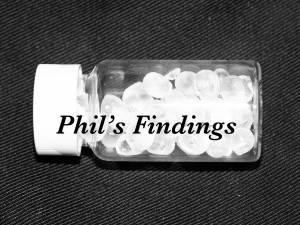Phil’s Findings #10: Metal
25 July 2011


Metals have been central to the development of our civilisation. This is evident in our naming of key times in history, such as the Bronze and Iron Ages. Over time, our understanding of metallurgy and our ability to manipulate metals improved, giving rise to one of the most iconic structural materials man has ever made: steel. The Victorians changed the world with steel when they made the suspension bridges, railways and passenger liners which allowed travel across the world and integration with other cultures. The engineers of this age were real innovators, but also risk-takers, as the structures they created had never existed before and no one knew for certain if ideas would translate from the drawing board into real life. However, for the most part their efforts were successful and they plastered Britain, and then the world, with these steel structures. Since then, we have been producing ever more complex alloys and formulations which have dramatically accelerated our rate of development, for example in the high powered jet engines which can propel us around the world in a matter of hours.
A majority of the elements are metals, and they exhibit a huge range of properties, from liquid mercury to hard metals like silver and gold, or heavy but soft metals like lead. The large range of characteristics that metals have means we can pick and choose them for the best application. For example, we make drinks cans out of aluminium because it is strong and light, and we make hammers out of steel because it’s heavy and hard. This large range of metallic characters also gives us a superb ingredients list to create a vast range of metallic alloys, with properties that can be very finely tuned to their individual applications.
So what is it about metals that make them so useful to us? To explore this, the first thing we should do is go right down to the nanoscale, where we see that metals have a very distinctive structure. We classically think of atoms as a nucleus being orbited by electrons like moons around a planet. Well, imagine bringing a massive amount of these atoms together, and instead of having all the electrons orbiting their own nucleus, many are free to roam through structure. This is essentially the case in metals – they are a composed of metallic nuclei stuck together by a sea of electrons. The reason that metals are very good conductors of electricity is because the electrons have the freedom to travel. The atoms in metals like to arrange themselves into a well organised structure where they sit side by side. The combination of this well organised structure and the free electrons allows heat to travel through metals very easily. In many metals, the bonding between the atoms is extremely strong, giving rise to a solid structure that can withstand very heavy loads.